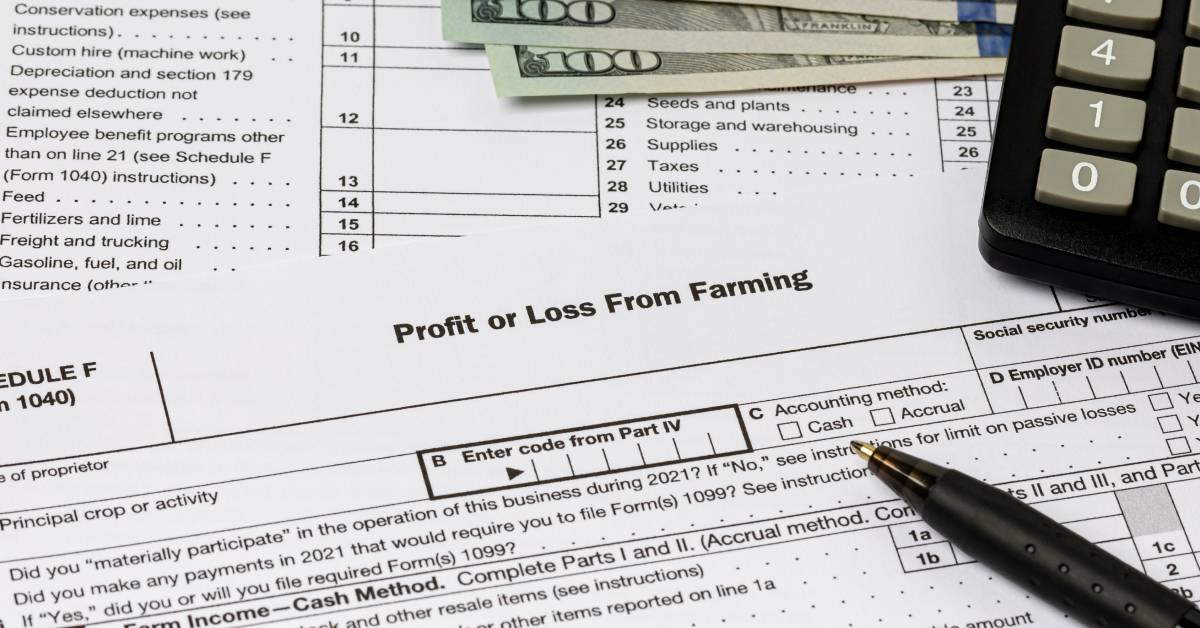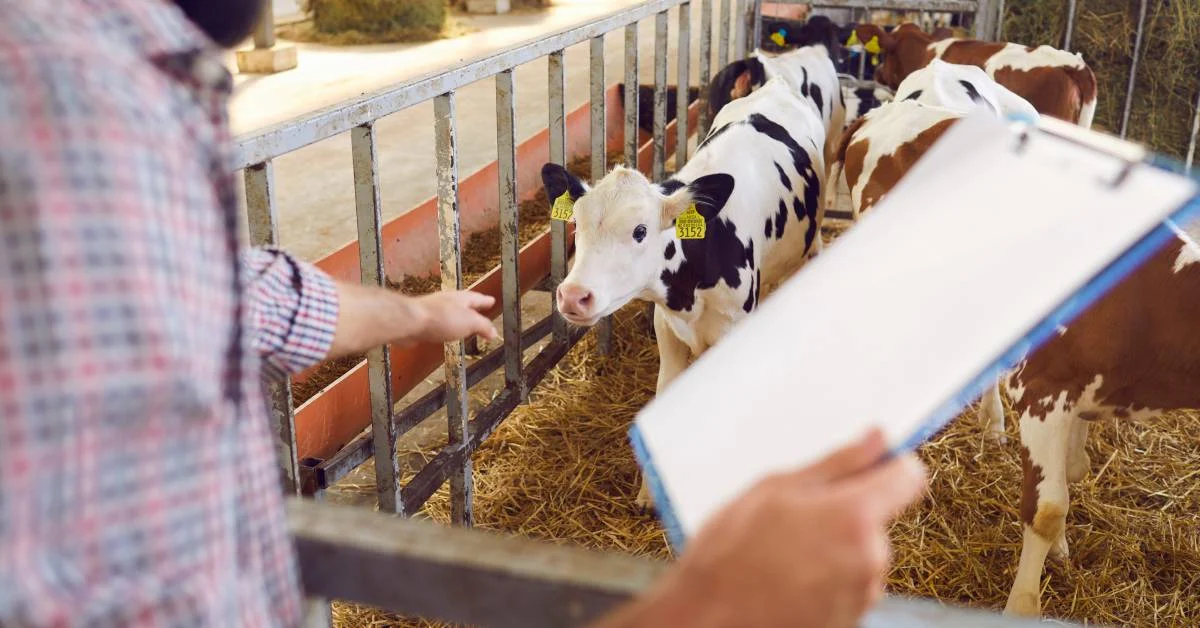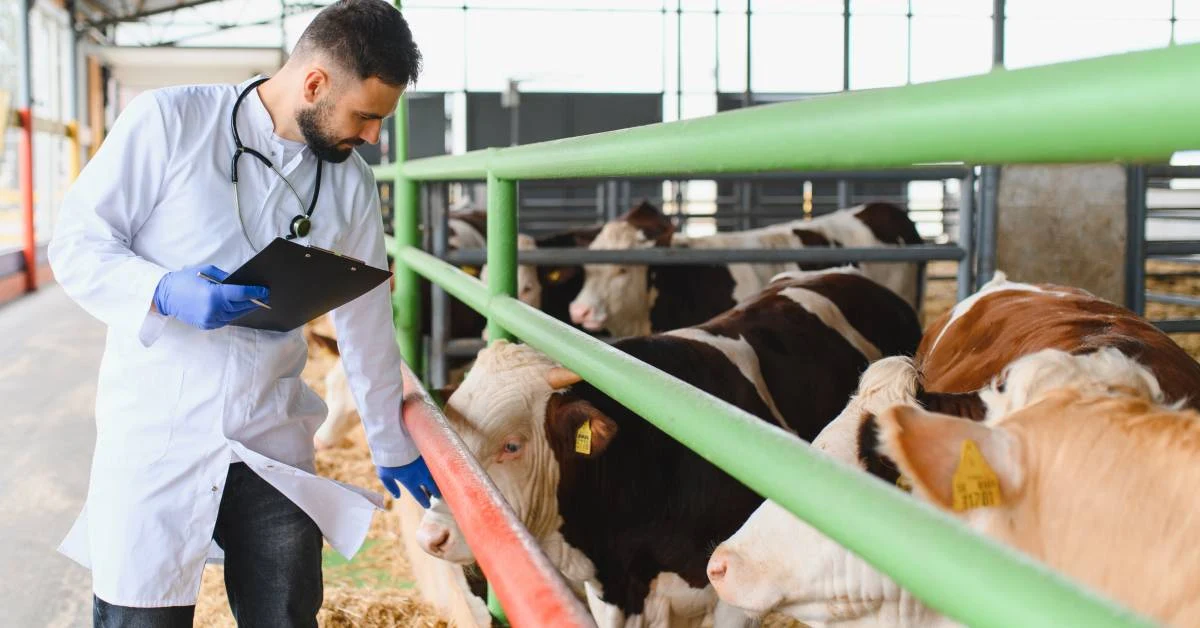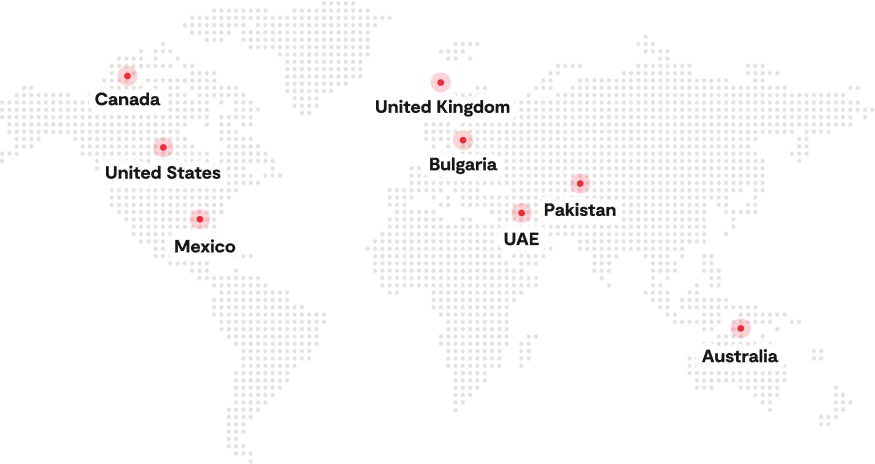Cash flow is the lifeblood of any farm. It determines whether bills can be paid on time, whether livestock and crops get the care they need, and whether there is room for investment in new equipment or expansion. Without a clear handle on cash flow and farm budgeting, even a productive farm can quickly find itself in financial stress.
In fact, in 2022, which was considered a record year for net farm income, 57 percent of farm operations still reported a financial loss, according to USDA data. This shows just how fragile farm finances can be, making farm cash flow planning and budgeting a necessity rather than an option.
This is where budgeting becomes a farmer’s strongest tool. A farm budget does more than list income and expenses. It provides visibility into upcoming costs, sets realistic revenue expectations, and identifies when cash reserves may be stretched thin. Combined with a clear understanding of the farm cash flow break even point, farmers gain the confidence to make smarter day-to-day and long-term decisions.
Of course, farming will always carry a degree of unpredictability. Weather shifts, global supply chain changes, and market demands are outside a farmer’s control. But with structured farm financial planning, producers can build stability in an unstable environment.
In this article, we will break down the essentials of farm cash flow, explore how to calculate and use cash flow break-even, share farm budgeting strategies that fit real-world operations, and show how digital tools like Folio3 AgTech Farm Accounting Software are helping farmers simplify planning and protect profitability.
Understanding Farm Cash Flow: The Backbone of Farm Finances
Farm cash flow is simply the movement of money into and out of a farm over time. It is not about how much profit a farm makes on paper but whether there is enough money available at the right time to cover daily expenses, repay debts, and invest back into operations. In other words, farm cash flow is what keeps the farm running smoothly week to week and month to month.
This is where many farmers run into challenges. Profit and farm cash flow are not the same thing. A farm might show a healthy profit at the end of the year, but if there is not enough cash on hand in July to cover feed, fuel, or loan repayments, the farm can still face serious financial strain.
The cycles of farming make this even more complicated. Revenue is often seasonal, arriving at harvest or when livestock is sold, while expenses like seed, fertilizer, veterinary care, and labor continue year-round. On top of that, payment delays from buyers or milk processors can stretch cash tight during critical periods.
Poor farm cash flow planning has very real consequences. Farmers without a clear picture of their income and expenses risk missing opportunities for growth, relying on high-interest loans to cover shortfalls, or falling behind on payments. Over time, this creates unnecessary stress and limits a farm’s ability to invest in productivity improvements.
Building a Farm Budget That Works Year-Round
Farm budgeting is one of the most practical tools a farmer can use to bring structure and predictability into an unpredictable business. Whether you run a small family farm, a mid-sized operation, or a large-scale enterprise, a budget provides a financial roadmap. It helps answer the key questions: What will it cost to run the farm this year? How much income is expected? And where is the money going to come from?
Why Every Farm Needs a Budget
Without a budget, decision-making often relies on guesswork. Unexpected expenses, like equipment repairs or veterinary bills, can put enormous pressure on cash reserves. A well-prepared farm budget allows farmers to anticipate costs, plan for lean periods, and allocate resources more effectively. It also makes it easier to present a clear picture of finances to lenders, partners, or family members involved in the farm business.
Types of Farm Budgets
Budgets are not one-size-fits-all. Each type serves a specific purpose:
- Whole-Farm Budget: Covers all income and expenses for the entire farm, giving a complete financial picture.
- Enterprise Budget: Focuses on the profitability of a specific crop or livestock enterprise. This is especially useful when comparing which enterprise contributes more to the bottom line.
- Partial Budget: Used when considering changes or new investments, such as adding a new crop or upgrading equipment. It shows the potential impact of that decision.
- Cash Flow Budget: Tracks when money will come in and go out throughout the year. Since timing is critical in farming, this budget helps avoid shortfalls and manage credit more efficiently.
How to Create a Simple Farm Budget
- List All Expected Income: Include crop sales, livestock sales, subsidies, custom work, or off-farm income.
- Record Fixed Costs: These are expenses like land rent, insurance, loan repayments, and farming taxes that do not change much month to month.
- Record Variable Costs: Inputs such as seed, fertilizer, fuel, feed, and hired labor.
- Estimate Cash Flow Timing: Match income and expenses by month to see when shortfalls may occur.
- Review and Adjust: Revisit the budget regularly. Conditions in farming change, and so should the budget.
A farm budget is not just paperwork to satisfy a bank. It is a tool to guide decisions about expansion, cost control, and investment. When used actively, it shows where the farm stands financially, highlights risks, and supports long-term planning.
Cash Flow Break-Even: Finding the Point Where Your Farm Pays for Itself
Every farm has a financial threshold it needs to reach before turning a profit. This is called the farm cash flow break-even point, the moment when your income covers all operating costs, leaving neither a loss nor a gain. For farmers, knowing this point is not just about accounting. It’s about understanding the minimum performance your farm must achieve to remain sustainable.
How to Calculate Break-Even in Farming
The formula is straightforward:
Break-Even Point = Fixed Costs ÷ (Selling Price – Variable Costs per Unit)
- Fixed costs: Expenses that do not change with production levels, such as land rent, insurance, or loan payments.
- Variable costs: Expenses that rise or fall with production, like feed, fertilizer, fuel, or hired labor.
For example, if a dairy farm has annual fixed costs of $120,000 and the variable cost of producing one gallon of milk is $1.20, while the selling price is $1.60 per gallon, the break-even point would be:
$120,000 ÷ ($1.60 – $1.20) = 300,000 gallons of milk
This means the farm must sell 300,000 gallons of milk before it begins to generate profit.
Why Break-Even Analysis Matters for Farmers
Knowing your break-even point supports smarter financial decisions:
- Pricing Decisions: Farmers can set crop or milk prices with a clear view of cost coverage.
- Scaling Operations: Expansion plans are easier to evaluate when you know how much additional output is needed to cover higher costs.
- Cost Reduction Strategies: Identifying which costs weigh most heavily on the break-even point helps farmers prioritize efficiency.
A Practical Scenario
Imagine a dairy farmer reviewing herd performance. By calculating the break-even milk price, the farmer sees that selling below $1.50 per gallon would not cover costs. With this knowledge, the farmer can negotiate contracts more confidently, plan feed rations strategically, and explore ways to cut input costs without compromising milk quality.
Understanding the farm cash flow break-even point gives farmers a financial baseline. It sets the minimum production or price goals the farm must meet to keep running, which is vital in an industry where margins are often tight.
Practical Strategies to Improve Farm Cash Flow
Strong farm cash flow management does not happen by chance. It requires farmers to adopt practical habits that keep money moving, reduce risk, and ensure financial stability throughout the year. Below are proven farm cash flow strategies that can make a real difference.
Plan for Seasonal Highs and Lows
Agriculture is seasonal by nature, and income rarely arrives in steady monthly amounts. Farmers can forecast revenue from harvests or milk cycles and align expenses with these income peaks. A farm cash flow template helps visualize when money will come in and when bills are due, making it easier to avoid shortfalls during lean months.
Diversify Revenue Streams
Relying on a single enterprise can leave farms vulnerable to market swings. Adding livestock alongside crops, exploring agritourism, or growing specialty crops like organic vegetables can spread risk and create multiple income streams. Even small-scale diversification provides more consistent farm cash flow.
Negotiate Payment Terms
Suppliers and buyers often have flexibility in payment arrangements. Negotiating longer payment windows with suppliers or quicker payments from buyers helps balance cash inflows and outflows. This reduces pressure during tight months and keeps farm operations running smoothly.
Monitor Input Costs Closely
Fertilizer, fuel, and feed prices can shift quickly. By monitoring costs regularly and adjusting strategies such as bulk buying, exploring alternative suppliers, or optimizing input use, farmers can protect margins and improve cash stability.
Build a Cash Reserve
Unexpected events like equipment breakdowns or poor weather can disrupt farm finances overnight. Setting aside a small percentage of income during profitable periods helps create a cash buffer. This reserve is invaluable during emergencies when borrowing may not be an immediate option.
Integrate Risk Mitigation Strategies
Insurance and financial tools like crop insurance, hedging, and futures contracts help protect farms from volatile prices, unpredictable weather, and other risks. Including these strategies in your farm cash flow planning safeguards income stability and ensures long-term financial security.
Use Technology for Smarter Decisions
Digital tools like Folio3 AgTech farm accounting software give farmers real-time visibility into expenses, revenue, and projections. These systems simplify tracking, provide instant farm cash flow reports, and support better financial planning. For farms looking to grow, adopting such tools is no longer optional; it is essential.
Smart Farm Budgeting: Cutting Costs Without Cutting Quality
A strong budget is not about spending less. It is about making sure every dollar works harder. With the right farm budgeting tips, farmers can reduce waste, manage expenses wisely, and still maintain quality across their operations.
Reduce Waste in Inputs
Feed, fertilizer, and seed often make up the largest share of farm expenses. Without proper planning, these inputs can easily go to waste. For example, over-purchasing feed that spoils or applying more fertilizer than crops require drains both money and resources. A well-prepared farm budget helps match input use to actual needs, cutting waste without hurting yields.
Use Data-Driven Decisions
Input prices fluctuate, and buying at the wrong time can inflate costs. Tracking past expenses and market trends allows farmers to make better purchasing decisions. A budget paired with accurate farm data helps compare supplier pricing, choose the right time to buy, and lock in savings. Resources like an honest review of Edgeful can also offer helpful context when evaluating financial tools for decision-making. This kind of farm expense management transforms budgeting from guesswork into strategy.
Plan Labor and Equipment Use
Labor inefficiency and poorly scheduled equipment use are hidden drains on farm finances. Budgeting that includes detailed labor planning ensures tasks are completed on time without unnecessary overtime costs. Likewise, scheduling machinery use reduces idle time, lowers fuel expenses, and extends equipment lifespan.
When applied consistently, smart budgeting builds a culture of efficiency. Farmers save money not by cutting corners, but by aligning resources with real needs.
Choose the Right Budget Type for the Job
Farmers can get the most from their budgeting efforts by selecting the right approach:
- Partial Budgets: Best for evaluating small changes, like switching seed varieties, adjusting fertilizer rates, or adding a new crop. It highlights the financial impact of a single decision without overhauling the whole farm plan.
- Enterprise Budgets: Ideal for analyzing profitability of entire farm enterprises, such as comparing beef vs. dairy or assessing a cash crop operation. It gives a full view of income, expenses, and margins, guiding larger strategic decisions.
When applied consistently, smart budgeting builds a culture of efficiency. Farmers save money not by cutting corners, but by aligning resources with real needs and using the right budgeting tool for every decision.
Common Cash Flow Mistakes Farmers Make (and How to Avoid Them)
Even experienced farmers can run into financial trouble if they overlook the basics of farm financial planning. Many issues come down to avoidable mistakes that weaken farm cash flow and make it harder to keep the business stable.
Overestimating Income or Underestimating Expenses
It is easy to assume a strong harvest or high market price will carry the year. The reality is that markets and yields often fall short of expectations. A conservative approach to income forecasting, paired with realistic expense estimates, helps create a more accurate farm budget.
Not Factoring in Debt Repayments or Interest
Loan repayments are a fixed cost that cannot be ignored. Leaving them out of cash flow planning creates gaps that are hard to fill later. Farmers should build all repayment schedules, interest charges, and upcoming loan renewals into their monthly financial plans. When navigating the loan origination, farmers should prioritize understanding the terms, requirements, and implications to make informed decisions.
Poor Recordkeeping
Without up-to-date records, it is nearly impossible to spot cash shortages before they become critical. Using digital tools to track expenses, sales, and input purchases simplifies recordkeeping and provides clear data for smarter decisions. Learn more about the differences between Farm Accounting Systems vs. Manual Bookkeeping to see why digital solutions save time and reduce errors.
Ignoring Seasonal Cash Shortages
Farming has natural ups and downs, and farm cash flow planning must account for them. Building a reserve fund or arranging credit lines before lean months ensures the farm can meet its obligations without stress.
By recognizing these common farm budgeting mistakes and addressing them early, farmers can avoid financial surprises and maintain greater control over their operations.
How Folio3 AgTech Farm Accounting Software Simplifies Farm Cash Flow and Budgeting
Managing farm finances is about more than balancing numbers. It requires constant monitoring, careful planning, and the ability to adjust quickly when conditions change. Folio3 AgTech Farm Accounting Software is built to make that process easier by giving farmers the tools they need to track, plan, and manage every part of their financial picture.
Key Features of Folio3 AgTech Farm Accounting Software
- Income & Expense Tracking
- Insurance & Risk Management
- Production Cost Analysis
- General Ledger
- Cash Management
- Asset Management
- Loan & Debt Management
- Bank Reconciliation
- Tax Management
- Accounts Receivable & Payable
With these features, Folio3 AgTech Farm Accounting Software simplifies the complex task of farm cash flow management and budgeting. It allows farmers to move beyond spreadsheets and manual records, giving them a reliable way to plan, monitor, and adjust their finances in real time. Taking the stress out of financial planning helps farmers focus more on building profitable and sustainable operations.
Conclusion
Strong farm cash flow, smart budgeting, and clear break-even analysis are not just financial exercises. They are the foundation of long-term profitability and stability in agriculture. By understanding where money is coming in, where it is going out, and what it takes to cover costs, farmers gain the clarity needed to make better decisions for their operations.
The good news is that financial control is achievable. With simple planning, discipline, and the right tools, farms of all sizes can manage expenses, prepare for seasonal challenges, and create room for growth.
For those looking to simplify the process, Folio3 AgTech’s Farm Accounting Software offers an efficient way to track income, expenses, and budgets in real time. Pairing sound farm financial planning with technology can help farmers stay resilient, profitable, and ready for the future.
FAQs
What Is the Cash Flow of a Farmer?
Farm cash flow refers to the movement of money in and out of a farm business over a period of time. It includes income from crop or livestock sales and other revenue sources, as well as expenses like feed, labor, and equipment. Unlike profit, which is calculated after all costs are deducted, farm cash flow focuses on when money is actually received and paid.
Are Farms Cash Intensive?
Yes, farms are generally cash-intensive. Farmers often need large upfront investments for seeds, livestock, feed, fertilizer, equipment, and labor long before income is received from harvests or sales. This makes careful cash flow planning essential to keep operations running smoothly.
How to Improve Farm Cash Flow?
Farmers can improve farm cash flow by planning for seasonal highs and lows, diversifying income sources, negotiating payment terms with suppliers and buyers, monitoring input costs, and building an emergency reserve. Tools like farm accounting software also help track and forecast farm cash flow more effectively.
How Do Farmers Increase Their Profits?
Farmers can increase profits by reducing input waste, optimizing labor use, improving yield quality, and finding higher-value markets such as specialty crops or direct-to-consumer sales. Budgeting and cost analysis also highlight areas where expenses can be reduced without sacrificing productivity.
What Are Overhead Costs in Farming?
Overhead costs in farming are ongoing expenses that are not directly tied to production levels. These include land rent or mortgage payments, insurance, utilities, equipment depreciation, and salaries for permanent staff. Managing overhead costs carefully helps improve both farm cash flow and profitability.







